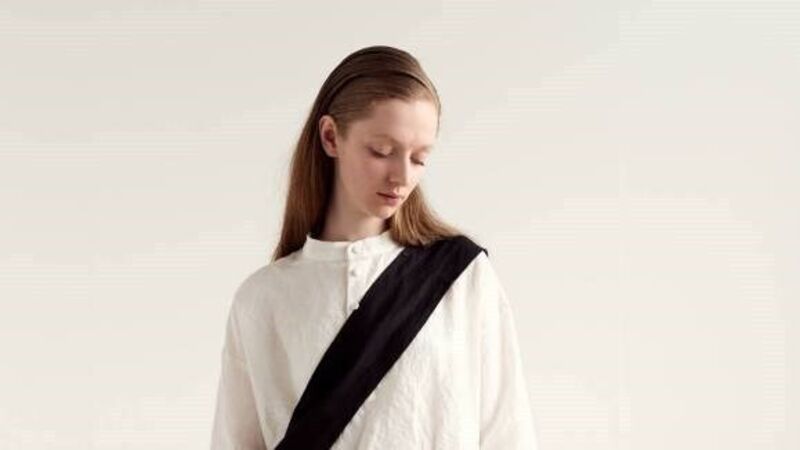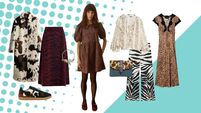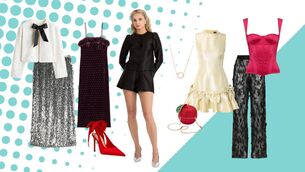The new generation of Irish designers leading a fashion revolution

Fashion Revolution Week and the millennials behind it want to break the spell of fast fashion. meets the new generation of Irish designers prioritising sustainable style.

When Richard Malone opened London Fashion Week in February, Vogue’s Sarah Mower wasn’t the only critic applauding the Irish designer’s ongoing commitment to sustainability.
“Was there ever a time when sustainable fashion was in its own special lane for ecologically worthy but slightly meh clothes?” she wondered. Commending the “cheerfully chic energy” of Malone’s autumn winter collection, she heralded a change: “A new generation that does its ethics by showing exciting fashion.”
And it’s true that Malone, 27, is one of a growing number of young designers putting ethics and the environment at the heart of what they do; treating sustainability not as a novelty or a selling point, but simply — as he says himself — “a given”.
For Malone, it’s been a founding principle of his approach since he was a student at Central St Martins. Now, eschewing the values and techniques of mass production, he works with hand woven fabrics produced by a small collective of female artisans in India, using environmentally safe dyes to produce his vibrant prints, and combining them with recycled fabrics and innovations like machine washable evening gowns, for high fashion that’s low-impact.
“It’s something I can be excited by, and customers and stores can be excited by, because I’m looking at new ways of making things, and the conversation about sustainability is really important to the design,” he says. As his business grows, it’s something he’s not prepared to compromise on.
“Once I compromise I’ve lost the battle,” he says. “I don’t think you can make anything contemporary without considering sustainability. Sometimes I feel like a bit of a narcissist for doing this. Realistically, the world doesn’t need any more clothes, but if that’s what you’re going to do, you have to at least consider sustainability, otherwise you’re just pumping more ‘stuff’ into the world that’s not really needed.”
Call it millennial mindfulness, or simply a generational response to being raised in a throwaway culture that wasn’t of their making, but Malone’s approach exemplifies a new attitude to sustainability; one that seeks to make fashion low-impact by design.

Fashion designer Jennifer Byrne, 26, agrees that segregating ‘sustainable fashion’ distorts the conversation. “It needs to be incorporated into our approach to fashion across the board,” she says. “Rather than having two separate streams, it just needs to be the new way — that’s the only option.”
Raised with an awareness of environmental issues, as a fashion undergrad in Limerick School of Art and Design, Byrne studied sustainability for her dissertation. Now she’s completing a masters in fashion ethics in Scotland, and along with continuing her ethical fashion line, she hopes to work as a sustainability consultant — a job Business of Fashion recently declared one of six “Fashion Careers of the Future”.
In August, Byrne will be among the first class to graduate from the fashion ethics course, a broad area of study encompassing everything from the threat of modern slavery to the environmental impact of microfibers. All aged between 25 and 28, with backgrounds in fashion, her classmates share a common interest in understanding and negating the impact of the fashion industry on people and the planet.
“Fashion is a medium for people to express themselves and show their creativity and their personality,” Byrne says, “but that shouldn’t have to come with a huge environmental or social impact.” If fashion is revolting, millennials are leading the charge, and many brands now employ experts to advise on improving their ethical credentials. Now the largest and most powerful consumer group, millennials represent over $200 billion (€164bn) in buying power in the US alone; and with recent studies from Nielsen and Deloitte showing millennials are most likely to pay more for sustainable products, they’re driving the push for industry-wide change.
It’s a push that’s also being fueled by activism, much of it propagated online, and this week, Fashion Revolution Week — an annual campaign marking the anniversary of the Rana Plaza factory collapse which killed more than 1,000 garment workers in Bangladesh five years ago — has been encouraging consumers to take to social media and ask, “Who Made My Clothes?” Byrne says the campaign helps raise awareness amongst people “not immersed in the fashion industry”, but adds: “We need to reach a point where we don’t have to ask the question, because we know brands have taken sustainability and ethics into consideration.”

Textile artist and activist Aoife Banks agrees. A final year student in NCAD, she believes, “At end of the day, it shouldn’t be down to the consumer to make sure someone, somewhere isn’t suffering for their fashion choices.”
Banks was midway through a fashion degree when, realising how complicit fast fashion was in the exploitation of women, she decided it was an industry she wanted no part of. Switching her area of study to fine art textiles, she has taken “a more radical route”, addressing the high cost of cheap fashion through sculptural rather than wearable textiles.
Last year, Banks visited the Rana Plaza site, and met with Bangladeshi garment workers and labour welfare organisations. “It was quite harrowing, as a sheltered western woman, to step into that world. As consumers in the west, we’re not exposed to that side of fashion,” she says, and as an activist, she’s working with Fashion Revolution Week to educate and inform consumers; keeping the welfare of garment workers to the fore long after the news cycle has moved on from a tragedy like Rana Plaza. “The movement is growing,” she says. “And these concerns are more prevalent in the younger generation — we’re becoming more conscious of the impact of our consumer habits.”

Textiles graduate-turned-fashion designer Alanagh Clegg, 24, agrees Fashion Revolution Week “helps amplify the message and put pressure on big companies take this seriously as an issue.” When she started her ethical brand, Four Threads, “The ideals represented by Four Threads were: inspired, handmade, quality, and conscious,” she says. “Conscious means being fully transparent, so if someone asks, ‘Who made my clothes?’, I can say, ‘This man, I’ll show you his photo’.” As a teenager immersed in the culture of fast fashion, Clegg admits sustainability and ethics were never on her agenda. “It wasn’t until I went to college that I began to question why we buy so much,” she says.
Summer internships with a sustainable textile specialist in London first introduced her to both the concepts of sustainability and the Indian producers she now works with. During her final year in college, Clegg travelled to India to research ethical production, and what she experienced changed the course of her career. “It was never about fashion for me,” she says. “But I met artisan producers making things with craftsmanship, love, and respect for tradition and the environment, and it meant so much to them. From saris handed down from mother to daughter to stitches and techniques passed down through generations, there was so much more to what they wore than just fashion or trends.” Studying tailoring by night, for her final year project, Clegg designed an embroidered coat through which she would trace the production process of a garment. When Emporium Kalu in Naas bought six coats, the concept for Four Threads was born.
In addition to using hand woven fabrics, low-impact workshops, having a completely transparent supply chain, and embracing complex traditional production techniques that are labour intensive but provide employment for hundreds of women, Alanagh’s trans-seasonal approach is about buying less and keeping things longer. If and when she introduces new styles, it won’t be to answer to seasonal demand, but rather “to answer a question as to what I can wear when it’s really hot”.
“I know it’s not how everyone else does it,” she says. “And it’s hard when someone says ‘we need something new, now’, and I have to just say, ‘that’s not what I do’.” But with the planet groaning under the weight of discarded fast fashion, millions falling victim to modern slavery, and our seas awash with microplastic, much of it coming from textiles, it’s clear there’s something radically wrong with the way ‘everyone else does it’.
With young designers committed to making changes, one small step at a time, perhaps there’s hope for the future of fashion. “I can do things right and know I’m doing a good job, but we need to see the bigger picture,” says Clegg. “We need to hold the big brands to account. The demand for change is there.”









